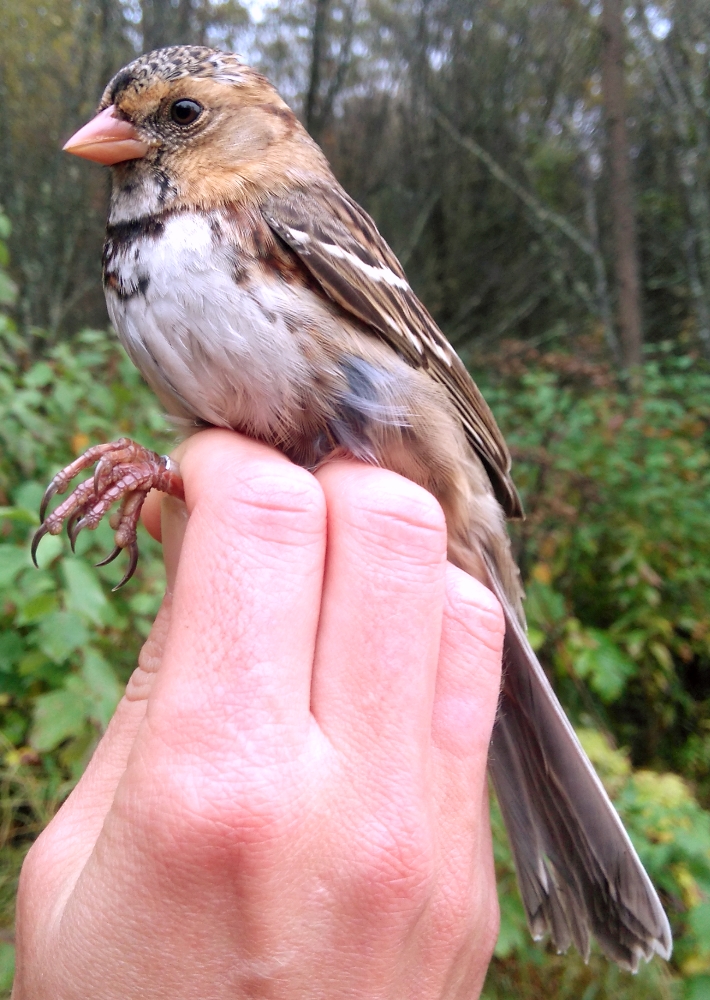It has been a very ‘sparrowey’ week at the Lesser Slave Lake Bird Observatory! Lots of sparrows of many species. Early in the week we experienced a couple days of rain that prevented us from opening the nets. Although we couldn’t band we were out as usual counting migrating birds. What we saw were thousands of sparrows that had been grounded by the weather and were foraging along the trails, roads, shoreline and in the parking lot. This is a common migratory strategy for many bird species. Migrate hard when the weather is nice – fly all day and all night, burning through fat reserves – and then take a break and replenish those reserves when the weather isn’t ideal for flight. Sort of the ‘make hay while the sun is shining’ principal.

Juvenile white-crowned sparrow

Adult white-crowned sparrow
When the storm system finally moved off, all the freshly bulked-up sparrows were ready to get back to the important business of heading south. Slate-coloured junco, White-throated and white-crowned sparrow were the three most common species, but they were joined by American tree, Lincoln’s, swamp, clay-coloured, and even the occasional Harris, fox and Le Conte’s sparrows (I bet many didn’t even realize we had so many sparrow species!). Other, non-sparrow, species that moved in good numbers were myrtle and orange-crowned warblers, American pipit, Lapland longspur and northern harrier (one morning just shy of 50 of these hawk-like birds of prey were counted).

American tree sparrow
The wave of sparrows didn’t last long, but we were able to get a few good days of banding in and we managed to catch one of the Harris sparrows! The first in over ten years, the seventh overall and my first ever. The Harris is the largest sparrow species in North America and it is the only songbird species that breeds exclusively in Canada. As adults they are very striking; they look like an average brown sparrow that someone has painted with a heavy black line from the back of their head, down their face and neck stopping at the top of their breast. They nest in the high arctic tundra and are extremely early migrants in the spring and late migrants in the fall. During the winter they can be found throughout the central plains of the United States and into southern Canada.

Harris sparrow
Northern saw-whet owls have remained steady through the week and I am now at 76 banded. I have yet to catch a boreal owl though. Last year was the first year we set up a second array of nets targeting for boreal owls (a slightly larger, darker owl than saw-whets that breeds exclusively in the boreal forest). We had started monitoring for them late September last year, but this year I have been trying since the September 1 when I started the saw-whet nets. The goal was to see if they moved earlier than we thought – this year seems to be showing that they do not. It is not a total bust though, as the boreal owl nets have caught six of the saw-whets captured so far.
